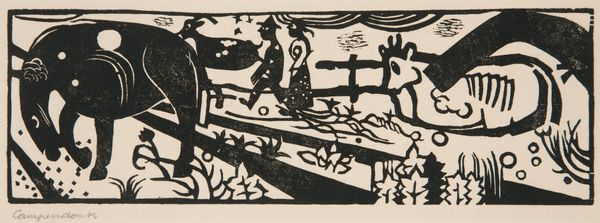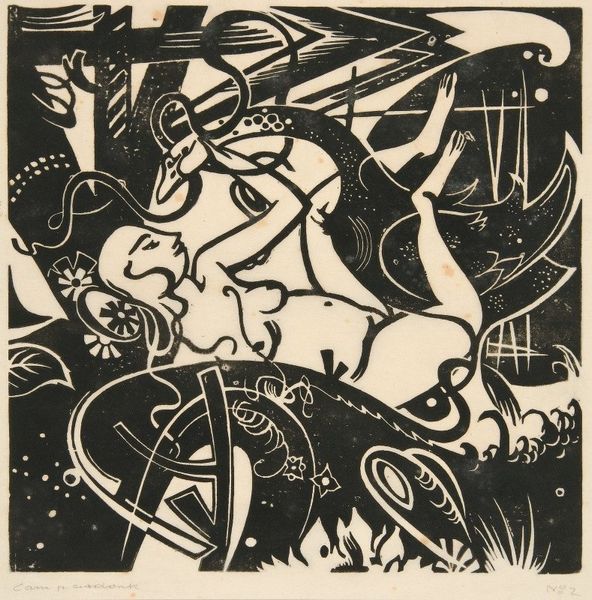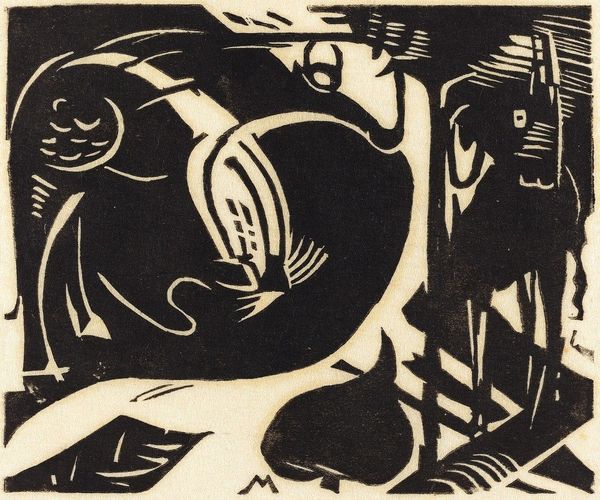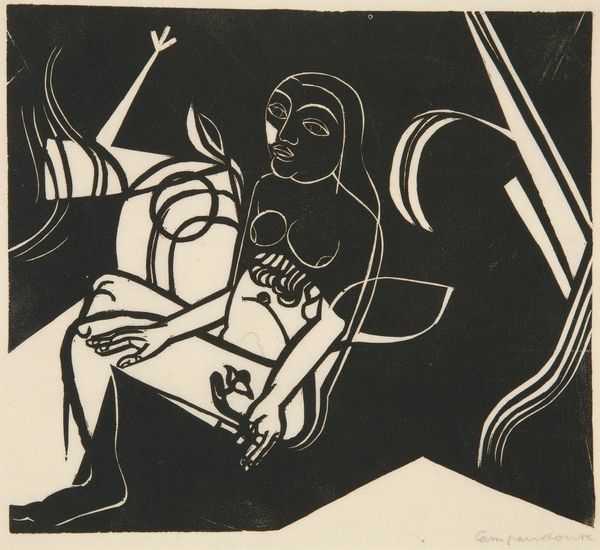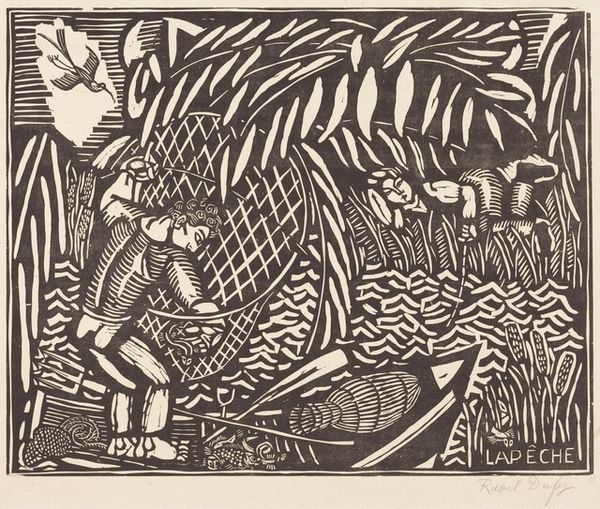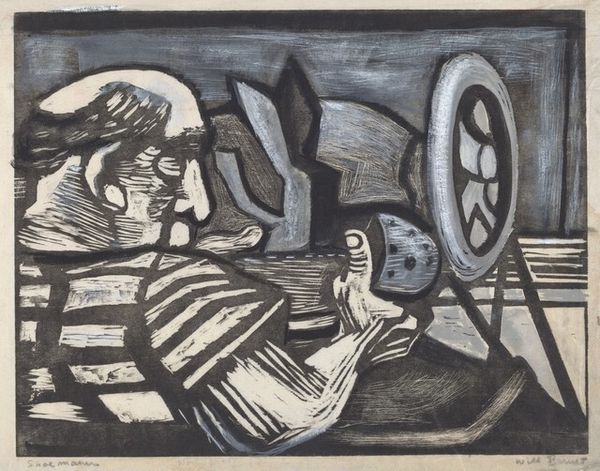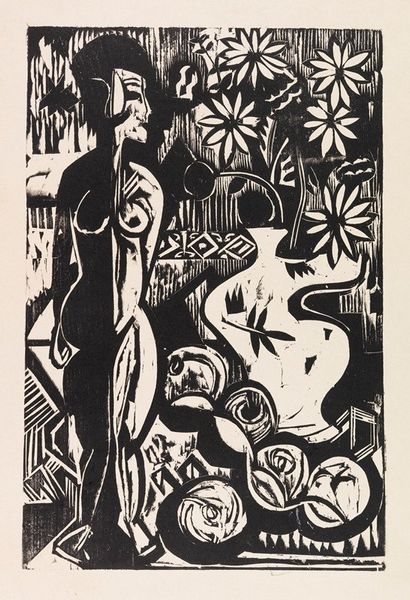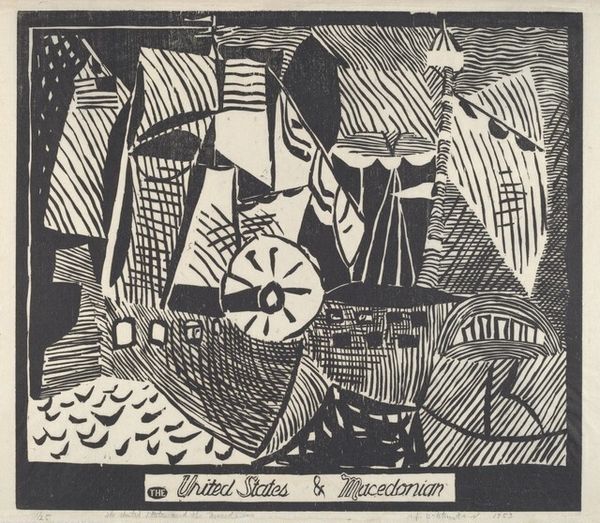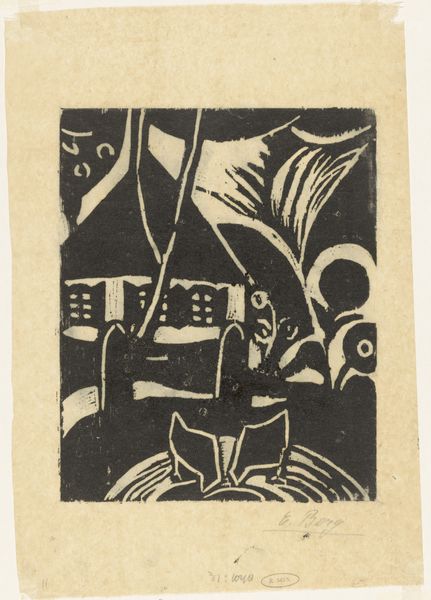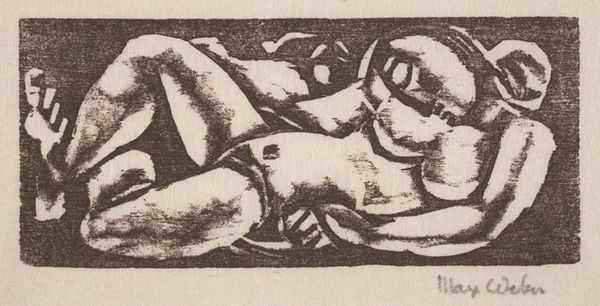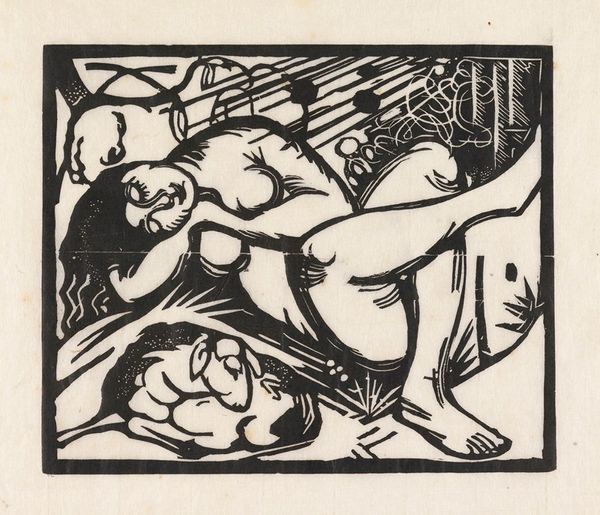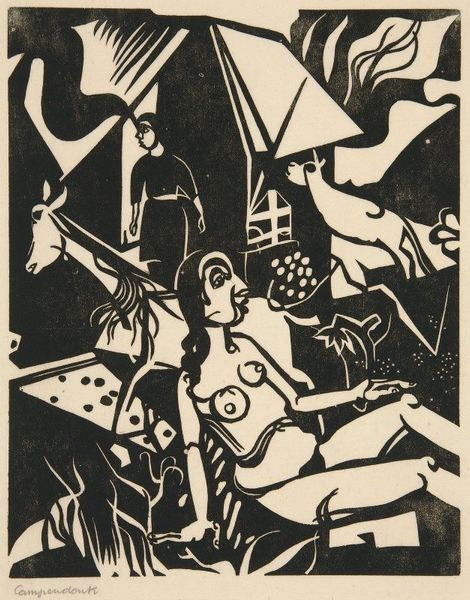
print, woodcut
#
ink drawing
# print
#
pen illustration
#
landscape
#
german-expressionism
#
figuration
#
abstract
#
expressionism
#
woodcut
#
nude
Copyright: Public Domain: Artvee
Curator: I am struck by the quietude of this image. It’s odd, because everything seems active and strange. Two nude figures floating in a boat under a chaotic, twinkling sky… And yet, it whispers. Editor: We're looking at "Two Nudes in Boat Under Starry Sky", a 1919 woodcut by Heinrich Campendonk. As part of the German Expressionist movement, Campendonk often explored themes of nature and spirituality through a distorted, abstracted lens. Curator: A "distorted lens" – yes, exactly! It's as if the world is seen through water, rippled and beautiful. Even the nudes feel abstracted, not quite of this earth but symbols of something more ethereal, like figures in a dream. I can see that. How do we interpret these distortions and abstract qualities that make expressionist pieces like this one feel modern today? Editor: The expressionists rejected academic realism in favor of subjective feeling. Consider the historical context. Campendonk created this piece in the aftermath of World War I, during a period of widespread disillusionment. This sense of discord seeps through in his unsettling arrangement of forms, reflecting anxieties about civilization that fueled artistic innovation in art centers like Berlin, Munich and Dresden.. Curator: The choice of the woodcut technique adds to this feeling too, don't you think? The stark contrast of black and white, the raw, almost brutal cuts in the wood... It amplifies the emotional intensity and the underlying tension, wouldn’t you say? Editor: Absolutely, the medium emphasizes the directness and urgency typical of Expressionist prints. The use of woodcuts helped disseminate artwork and political statements among a broader public during a time of political volatility, further linking art to social awareness. These prints were not merely aesthetic statements. They also served a critical communicative function within Weimar society, as cultural forces aimed to re-orient individual and social consciousness amidst change. Curator: It’s an interesting way to think of that printmaking – I suppose for me, knowing it came from 1919 changes how I experience this, I realize. This artwork reminds me, in the end, of those long, sleepless nights staring up at the stars, wondering what it all means. This really hits me; that feeling hasn't changed one bit in over a hundred years! Editor: Yes, exactly! That lingering, somewhat pained connection… Campendonk’s woodcut helps us re-think these personal, interior moments, and place them in dialogue with the broader project of cultural reform underway during and after WWI. Thank you for taking us along that path.
Comments
No comments
Be the first to comment and join the conversation on the ultimate creative platform.
